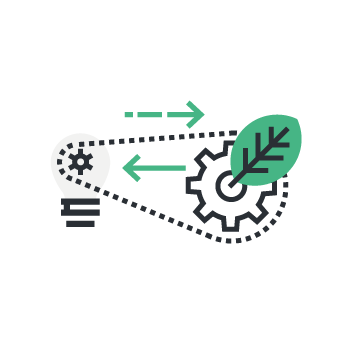
In a previous article, 'What the Scope is that?', I explained the different emission scopes that need to be calculated on the race to Net Zero, drawing on the experience of AESSEAL, which was one of the first major UK engineering companies to reach that standard and go beyond.
Now AES Engineering Group, the global business, is setting out a roadmap for its own journey beyond Net Zero. In the run-up to the UN Climate Change Conference in Glasgow we have pledged to try and get beyond Net Zero by next year, and to continue to invest £29 million by 2029 to hit the target and get well beyond.
This is how it worked for AESSEAL. We found that we needed to offset the Scope 1 emissions of 290 tonnes plus 80 tonnes of business flights. In order to do that, under the Net Zero rules, we were able to purchase offsets and in our case 420 tonnes of offsets at a price of £7.00 a tonne.
As at least one observer has commented, this is trivial and is not even properly priced, since the UK left the EU Emissions Trading Scheme.
What’s more, if priced at £7.00 a tonne for offsets, it is still possible to ignore it or pay it. 46,352 times £7 is £324,464 at the current price which is artificially low.
If priced at the £22.00 a tonne for offsets, which was the last successful auction bid for a tree planting scheme run by the UK Government called “Woodland Carbon Guarantee” scheme, the cost to offset 46,352 tonnes is £1,019,744.
If priced at the current European trading scheme rate of €57.00 a tonne, let’s say £47.50 a tonne, the cost of offsetting would rise to £2,201,720.
If priced in the real world, as the planet fries, the cost of offsets will rise to at least £100 a tonne or £4,635,200 million, which is more than the profit that many businesses capable of making.
In short, for most businesses dealing with emissions reductions is about business survival in the future as the cost of their unchecked emissions will be greater than the profit they can make.
At the AES Engineering Group we have now calculated that our Scope 1 and Scope 2 emissions are in the region of 4,500 tonnes annually. Our Scope 3 emissions, both upstream in our supplier chain and downstream have been calculated at 112,000 tonnes. As you can see, the Scope 1 and Scope 2 emissions can potentially be dealt with, at least at current offsetting prices, but this may become unsustainable in the future if offsetting prices rise.
The even bigger challenge ahead, for companies and the planet, is dealing with the upstream and downstream Scope 3 emissions. If a company only buys from Net Zero suppliers that is clearly going to be a huge win.
In the case of AESSEAL plc, and the AES Engineering Group, as we make environmental products, our Scope 3 offset is greater than our Scope 3 cost and we are currently demonstrating that the difference is likely to be a factor of 10 or more as we stop companies around the world from evaporating water completely unnecessarily, but on an industrial scale.
How the Group will deal with its Scope 3 emissions is a future step on our journey. Part of that will be persuading our suppliers that if they damage the planet that is also our problem and that things have to change.
Down the line, most private sector businesses will need to reduce emissions or, based on current trends and predictions, the cost of CO2e will be greater than their profitability. Businesses who take little or no action on climate change are almost certainly sleep-walking to their doom.
In short, environmental projects and especially those with any reasonable financial return on investment, are not just good for business, they are good for business survival.

Written by Chris Rea, Group Managing Director, CBE, DL, BSc, CEng, HonFIMechE.
Follow Chris on Linkedin https://www.linkedin.com/in/chris-rea-8961b617/detail/recent-activity/posts/



